What are tendons?
Tendons are strong, flexible bands of fibrous tissue that connect muscles to bones. They are composed primarily of collagen, a protein that provides strength and flexibility to the tissue.
Functions of tendons
1. Transmit Muscle Forces: Tendons transmit the force generated by muscles to the bones, allowing movement to occur.
2. Stability: Tendons help stabilize the joints by holding the bones in place during movement.
3. Energy Storage: Tendons store and release energy, acting like a spring during movement, which can improve the efficiency of muscle action.
Structure of tendons
Tendons are made up of densely packed collagen fibers aligned in the direction of force transmission. The collagen fibers are arranged in parallel bundles, providing strength and flexibility to the tendon.
Common injuries
1. Tendonitis: Inflammation of the tendon due to overuse or injury.
2. Tendon Rupture: A partial or complete tear of the tendon, often resulting from sudden or excessive force.
3. Tendinosis: Chronic degeneration of the tendon due to repetitive microtrauma, leading to pain and reduced function.
Preventing tendon injuries
1. Gradual progression: When starting a new exercise or activity, gradually increase intensity to allow tendons to adapt to the increased demands.
2. Proper technique: Using proper form and technique during physical activities can reduce the risk of tendon injuries.
3. Rest and recovery: Adequate rest periods between activities can help prevent overuse injuries to tendons.
Conclusion
Tendons play a crucial role in enabling movement and providing stability to the musculoskeletal system. Understanding their structure and function can help in preventing injuries and maintaining overall musculoskeletal health.
.◂Science Worksheets and Study Guides Seventh Grade. Ecosystems, food chains and food webs

 Activity Lesson
Activity Lesson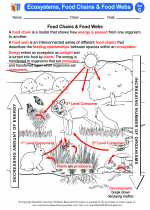
 Worksheet/Answer key
Worksheet/Answer key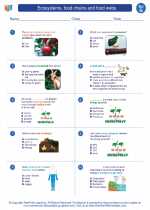
 Worksheet/Answer key
Worksheet/Answer key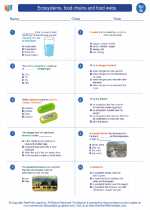
 Worksheet/Answer key
Worksheet/Answer key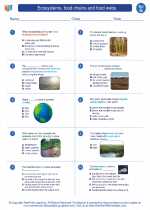
 Vocabulary/Answer key
Vocabulary/Answer key
 Vocabulary/Answer key
Vocabulary/Answer key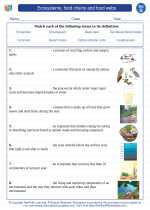
 Vocabulary/Answer key
Vocabulary/Answer key
 Vocabulary/Answer key
Vocabulary/Answer key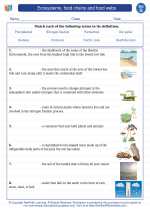
 Vocabulary/Answer key
Vocabulary/Answer key
